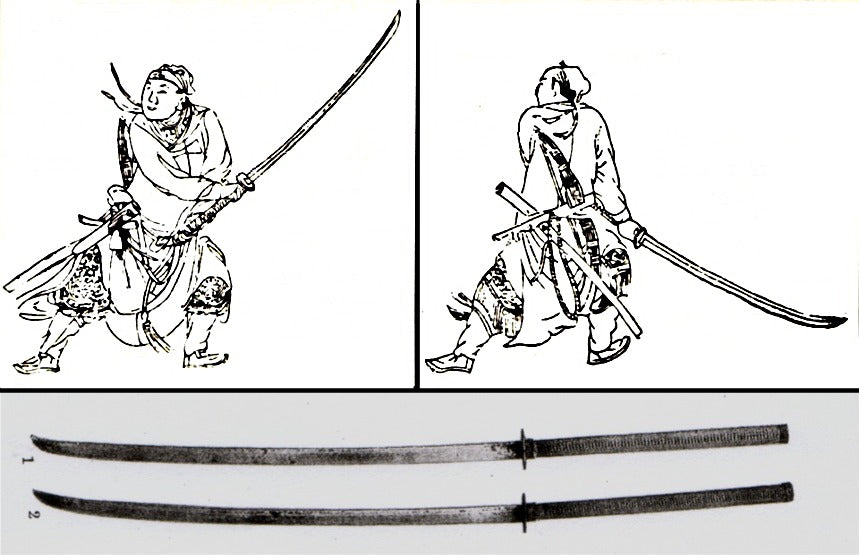Your Cart is Empty


Japan isn't the region with a rich history of bladesmithing. Countless other regions have pioneered their own swords, including China. While China has produced dozens of swords throughout its history, one of the most prolific is the zhanmadao
What Is the Zhanmadao?
The zhanmadao is a traditional Chinese sword that originated during the country's Han Dynasty (206 to 220 A.D.). The term "zhanmadao" translates to "chopping saber," which is an accurate description of this sword's characteristics. Featuring a single-edged, curved blade, it was used primary for chopping-style attacks and defensive maneuvers.
As shown in the photo above, the zhanmadao was relatively long when compared to other traditional Chinese swords. A typical zhanmadao measured over 78 inches (200 cm), with an average blade length of approximately 59 inches (150 cm). This large size made it a formidable weapon among Chinese soldiers. However, the zhanmadao was particularly effective when wielded by foot soldiers, many of whom use the sword to defend against cavalry units.
Variations of the Zhanmadao
While most zhanmadao featured the same basic design consisting of a single-edged, curved blade, swordsmiths have produced several variations of this classic Chinese sword. There was the chandao, for example, featured this same design but on a larger scale. It was a two-handed sword that was used primarily against armored opponents. Other variations of the zhanmadao include the miadao and wodao.
Why the Zhanmadao Is Significant
The zhanmadao is significant because it influenced other regions' bladesmithing practices, including Japan. It wasn't until Japan's Kamakura Period (1185 to 1333) when bladesmiths in the region produced the katana. This, of course, was many centuries after China had produced the zhanmadao. Therefore, many historians believe that Japanese swordsmiths borrowed some of the bladesmithing practices from their Chinese neighbors, thus paving the way for the katana, wakizashi and other prized traditional Japanese swords.
Japanese bladesmiths discovered that the zhanmadao's curved edge made it a versatile weapon, as the blade's curvature allowed for a strong edge with a flexible spine. This ultimately led to the creation of differential heat treatment. Along with high-carbon steel (tamahagane), Japanese bladesmiths were able to create some of the world's highest quality swords.
Unfortunately, very few examples of the zhanmadao are known to exist today. Most have been damaged, destroyed or lost over the years. The few that do exist, however, often feature intricate designs and wrappings on the handle.